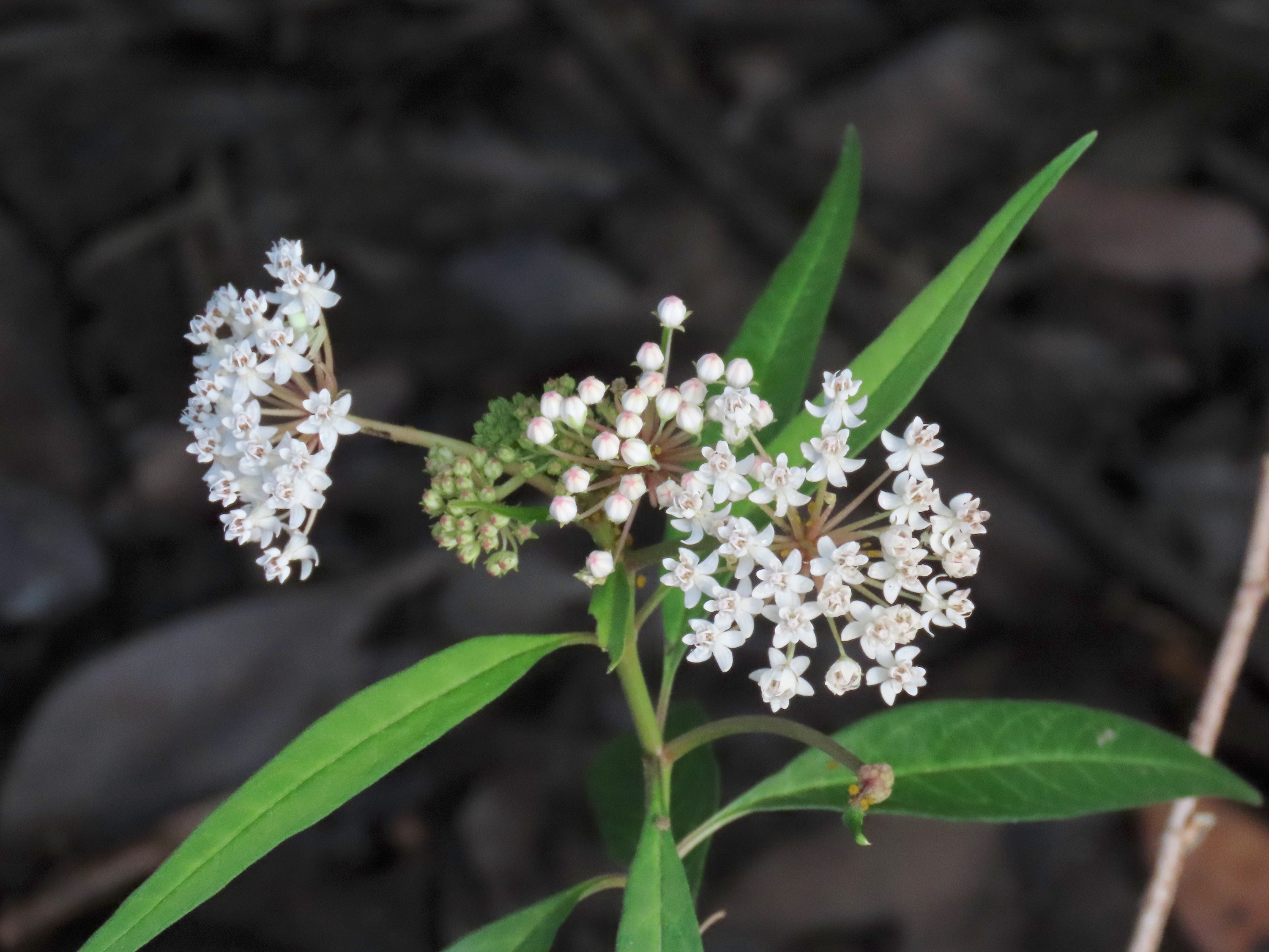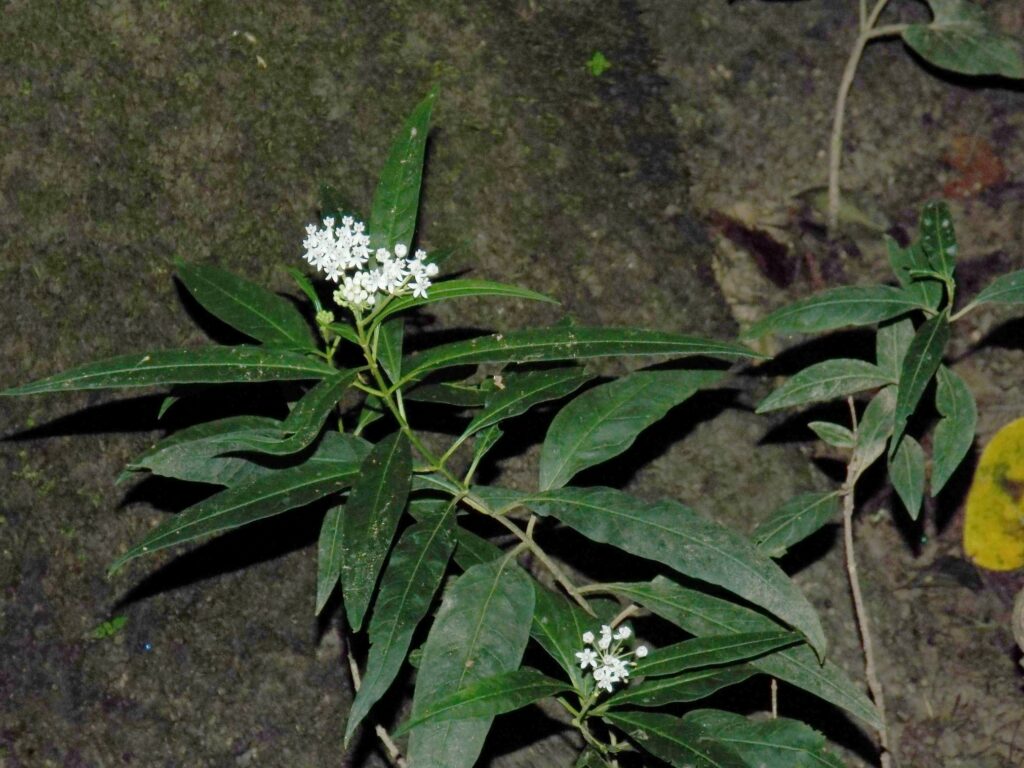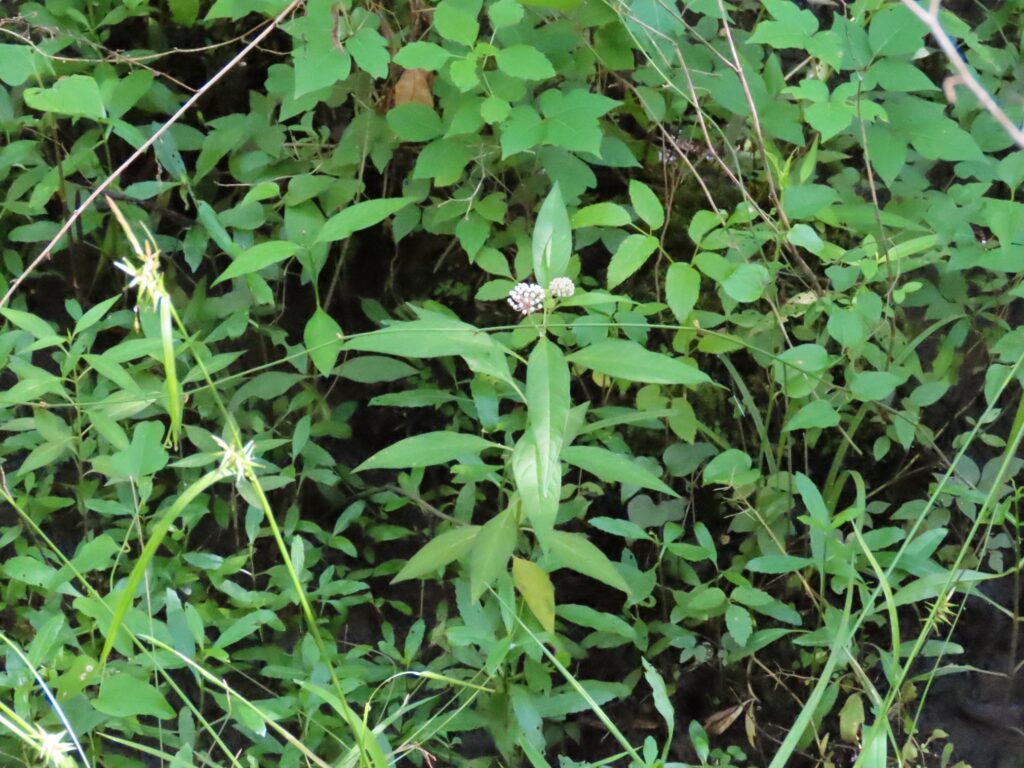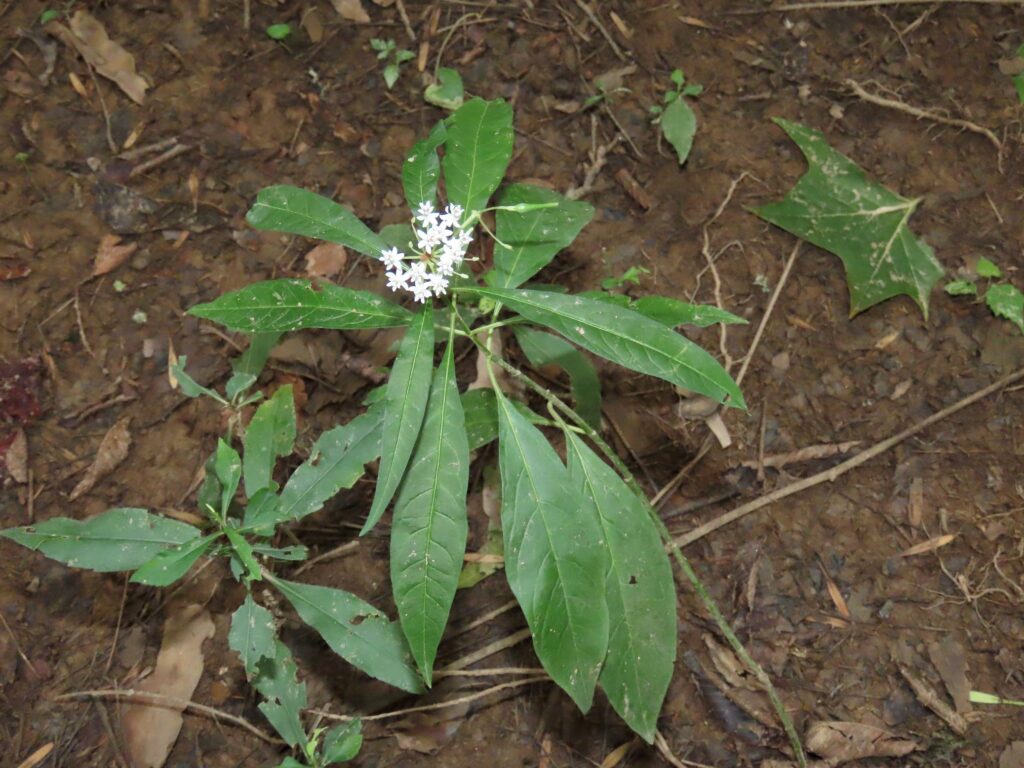





This week for Flora and Fauna Friday we have the cradle of Carolina’s Monarchs, Aquatic Milkweed (Asclepias perennis).
Aquatic Milkweed is found throughout the Lowcountry, ranging from South Carolina west throughout the southeastern coastal plain and north up the Mississippi River valley. It’s a perennial wildflower that grows in bottomland forests, floodplains, and the mazes of ditchwork and backwaters that permeate and diffuse them. Moist, rich soils that flood seasonally are a must have for its natural niche. Aquatic Milkweed grows to knee height in small clumps of singular stems. These stems are stacked with opposing pairs of narrow, blade-like leaves from base to leading bud. Come late May and through the end of July our Milkweed blooms.
Two to three dozen individual, pure-white flowers emerge together into a ball atop the tip of the plant. Each flower bears that unmistakable Milkweed shape: an hourglass of petals, five facing up in a tight packed bundle around, anthers and ovary, and five swooping down below into a showy skirt to catch the eye of passerby pollinators. New balls of flowers are merged beside the old, refreshing the display throughout the season and expanding across the stand of stems. Aquatic Milkweed flowers are a bright white beacon, a lighthouse standing amidst and shining across a choppy sea of green, cutting through the suffocating umbral umbrella of a bottomland forest. But what does the beacon beckon? It brings in butterflies! Most importantly the Monarch butterfly (Danaus plexippus).
Monarchs rely on native Milkweed plants to serve as nursery and nourishment for their caterpillars. Milkweed plants contain toxic compounds that ward off most herbivores. Monarchs have taken advantage of this, making themselves immune to the poison while also packing it into their own bodies as caterpillars, to serve as a lifelong shield against birds, lizards, and other predators. Monarchs are on the decline throughout much of the Unites States right now. They are even a candidate for federal listing as a threatened species. Their decline is due to impacts on all fronts at all stages of their life cycle. Monarchs are migratory, a trait that makes them resilient to large seasonal changes across a large landscape but simultaneously vulnerable to chronic, widespread habitat degradation or loss of critical refuge habitats. The most chronic threat they are facing comes from the widespread loss of Milkweed on the landscape over the last fifty years. Monarch caterpillars can only eat Milkweed. Without it, they will perish.
Here in South Carolina, Aquatic Milkweed is the most important host plant for our Monarchs. Its populations in our remote blackwater swamps are stable and consistent. Thus, Aquatic Milkweed provides a dependable network of host plants that our Monarchs rely on every spring. In fact, it’s so dependable many of our Monarchs in South Carolina no longer migrate! Well they still do, just not very far. From beaches to bottomlands, that’s as far as they go. Our Lowcountry Monarchs winter in the thermally insulated maritime forests of our beachfront barrier islands and our sheltered Sea Islands. Come spring they sail a couple dozen miles upriver, settling in the swamps and bottomlands of our blackwater rivers. There they lay their eggs upon Aquatic Milkweed and pass the mantle to the next generation. This new crop of Monarchs then disperses throughout our state throughout the year and makes use of the great diversity of Milkweed species found across our landscape. Then their children, or grandchildren, complete the circuit and return to their shelter by the sea to weather another winter.
If you’d like to learn more about the Lowcountry’s resident Monarch population, you can check out the research paper behind this discovery here: